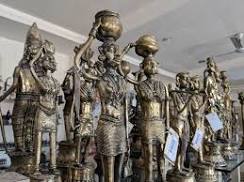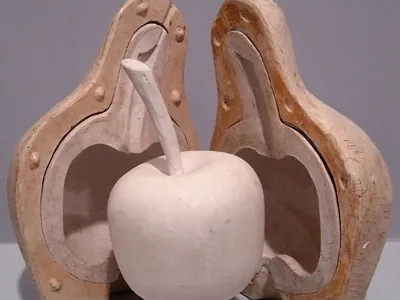ForumIAS announcing GS Foundation Program for UPSC CSE 2025-26 from 27th May. Click Here for more information.
Source-This post on Dhokra Shilpkala sculpture has been created based on the article “Dhokra Shilpkala: How Chhattisgarh’s Ocher Studio is helping to preserve India’s 4,000-year-old craft” published in “The Economic Times” on 9 February 2024.
Why in the news?
Chhattisgarh’s Ocher Studio is helping the artisans to preserve India’s 4,000-year-old craft- Dhokra Shilpkala.
About Dhokra Shilpkala Sculpture

| Aspect | Detail |
| Description | The word “Dhokra” is believed to be derived from the Dhokra Damar tribes, the traditional metal smiths of Central India. |
| Origin | The origins can be traced back to the tribal communities residing in the regions of Chhattisgarh, Jharkhand, West Bengal, and Odisha. |
| Technique | It uses the lost-wax technique, or cire perdue, for metal casting. |
| Artistry and design | 1) The beauty of Dhokra Shilpkala lies in its rustic charm and the organic nature of its designs. 2) Artisans draw inspiration from nature, mythology, and everyday life.They incorporate motifs such as animals, birds, deities, and tribal symbols into their creations. 3) Each piece display a sense of timeless elegance and cultural richness. |
| Challenges | 1) Rapid growth in urbanization 2) Rise of mechanized production techniques. |
What is lost wax technique?

1) The process begins with the creation of a clay core, which serves as the base for the final metal sculpture.
2) Artisans then coat this clay core with a layer of beeswax. They sculpt the intricate designs and patterns by hand.
3) Once the wax model is complete, it is covered with layers of clay.
4) The entire structure is then heated, allowing the wax to melt and drain out. It leaves behind a cavity in the shape of the original sculpture.
5) Molten metal, which is a combination of brass and bronze, is poured into this cavity, filling the space left by the melted wax.
6) After cooling and solidifying, the clay mould is broken away, revealing the final metal casting.
UPSC Syllabus-Art & culture




